Time for a listicle!
I’ve felt the need to list (almost) every mobile phone that I can remember owning and using, ever. There’s at least one missing from the list. My stupid old brain won’t let me recall the niche brand of phone I bought some years back. It’ll come to me one day.
There’s a table below with some of the interesting manufacturers specs, and further down are some rambling memories from my experience of owning the various devices. This is all mostly for my own benefit, to recall what I had, but you may find it mildly interesting.
If anyone has details I’m missing from the table below, do leave a comment, or pull request.
| Year | Make | Model | OS‡ | Weight | 🔋mAh | Swap† | Screen | Resolution |
|---|---|---|---|---|---|---|---|---|
| 1993 | Nokia | 101 | ? | 141g | ||||
| 1995 | Nokia | 2140 | ? | 236g | 550 | ✓ | 4x13 char | |
| 1998 | Nokia | 6130 | ? | 152g | 600 | ✓ | 5 lines | |
| 1998 | Nokia | 8110 | ? | 152g | 400 | ✓ | ||
| 1999 | Nokia | 7110 | ? | 141g | 600 | ✓ | 96x65 | |
| 2003 | Nokia | 6600 | Symbian 7.0s | 122g | 850 | ✓ | 2.1" | 176x208 |
| 2005 | Nokia | 6680 | Symbian 8.0a | 133g | 900 | ✓ | 2.1" | 176x208 |
| 2008 | Nokia | N82 | Symbian 9.2 | 114g | 1050 | ✓ | 2.4" | 240x320 |
| 2009 | HTC | Hero | Android 1.5 | 135g | 1350 | ✓ | 3.2" | 320x480 |
| 2010 | Apple | iPhone 4 | iOS 4 | 137g | 1420 | ✗ | 3.5" | 640x960 |
| 2011 | Apple | iPhone 4s | iOS 5 | 140g | 1432 | ✗ | 3.5" | 640x960 |
| 2012 | LG | Nexus 4 | Android | 139g | 2100 | ✗ | 4.7" | 768x1280 |
| 2012 | bq | Aquaris e4.5 | Ubuntu | 123g | 2150 | ✗ | 4.5" | 540x960 |
| 2013 | Meizu | Pro 5 | Ubuntu | 168g | 3050 | ✗ | 5.7" | 1080x1920 |
| 2014 | OnePlus | One | Android 4.4.2 | 162g | 3100 | ✗ | 5.5" | 1080x1920 |
| 2015 | OnePlus | X | Android 5.1.1 | 138g | 2525 | ✗ | 5.0" | 1080x1920 |
| 2017 | OnePlus | 3T | Android 6.0.1 | 158g | 3400 | ✗ | 5.5" | 1080x1920 |
| 2019 | OnePlus | 5 | Android 7.1.1 | 153g | 3300 | ✗ | 5.5" | 1080x1920 |
| 2022 | Apple | iPhone 13 Mini | iOS | 141g | 2438 | ✗ | 5.4" | 1080x2340 |
- ‡ - OS that the device originally shipped with.
- † - Meaning, can I replace the battery without a screwdriver or glue removal
Analog
Nokia 101 (1993)
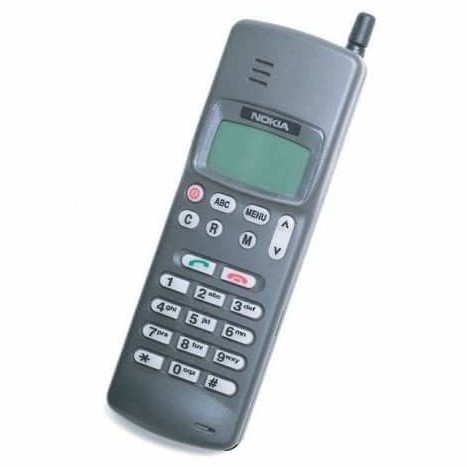
My first mobile phone, which I was roundly mocked for owning at the time. My friends mostly didn’t have phones, and thought it ludicrous that anyone would need one. I was a technician at the local college, so had no real reason for having a mobile phone.
I’m a nerd though, and so the very idea I could have a phone in my (large) pocket was magical. So I got this one, with minimal research. I barely used it though. Calling in or out was rather expensive back then.
Mobile phones with pull-up antennas were cool. They should do that again. None of this “You’re holding it wrong” nonsnese with those!
Digital
Nokia 2140 (1995)
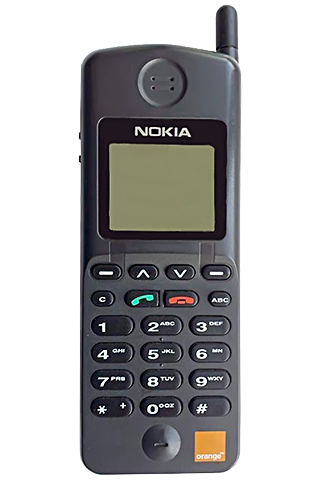
The 2140 was my first digital (GSM) phone. I got this when I switched to the Orange mobile network in the UK. The Nokia 2140 was the Orange version of the Nokia 2110. This was due to Orange using different frequencies than the other UK networks - 1800MHz vs 900MHz and 1900MHz.
At the time I was an IT Engineer working for Lantec, based in Langley. I had a company diesel Ford Mondeo to various customers all round the South of the UK. The 2140 was my lifeline back to head office.
These had batteries you could easily get replacements for and swap out. I used to carry a couple of spares around with me, including a higher-capacity version which made the phone quite chonky in the hand. Switching the battery took seconds, and the phone booted to usable almost immediately.
The phone number I got when I joined Orange is the same one I still have today, aside from having a 7 inserted so 0973 became 07973.
I used to do an awful lot of texting or “SMS” as we called it back then. In the UK, at that time, there were four mobile networks - Vodafone, Cellnet, Orange and Mercury One2One. I was on Orange and my girlfriend (now wife) was on Mercury. The cellular networks had no cross-network billing for SMS. So you basically couldn’t send a text to anyone who wasn’t on your network.
The workaround was to find foreign SMS centres. These would allow you to bounce messages off a poorly configured SMS centre - usually in a foreign country - to another network in the UK. One byproduct of using these SMSCs was no authentication or billing. So they were effectively free to use. Until the operators of them found out what was happening, and locked them down.
People would share lists of “foreign SMSC” numbers which you could go through on your phone until one worked. I would share these with my friend group so those of us with phones could text eachother.
I have one fond memory of working in Copenhagen while my girlfriend was on holiday in Mexico. We were texting eachother for free by bouncing SMS off a centre in eastern Europe.
These days we’d use iMessage, WhatsApp or Telegram. Back then, none of those existed. It was SMS, voice calls or nothing.
Also, another phone with an awesome pull-up antenna.
Nokia NK702/6130 (1998)

NK702 was the Orange branded version of the generic 6130, which was similar to the generic 6150. An absolute unit of a mobile phone. It was the first Nokia to feature the classic game of “Snake”.
Nokia made a link cable and supporting software, so you could attach this (and other) device to a PC. It was very fickle. The phone would also show up as a modem over the cable, so you use it for dialling out from the PC.
I remember doing tech support from a hotel with one of these attached to a laptop. I maintained a steady 9600 baud connection and was able to use Windows RDP/VNC to manage a remote server. Amazing what we put up with back then!
For a long while I had one of these in a drawer as a backup phone. There’s probably one in the loft somewhere. :D
WAP era
Nokia NK502/8110 (1998)
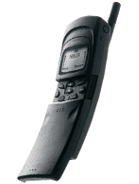
The “Matrix” or “Banana” phone, a modified version of the 8110 was used in the film The Matrix.
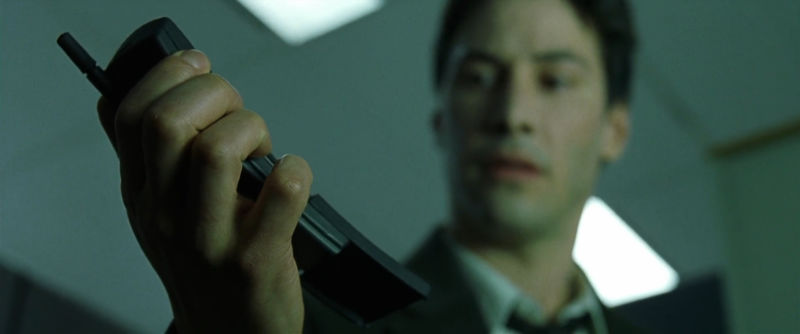
In the film Neo would pop the cover down by the press of a button. The slider was manual in real life, but the spring-loaded mechanism was added to the chunkier brother, the 7110.
The 8110 wasn’t an especially amazing phone, the whole cover was really quite a gimmick. Answering the phone with the slider, rather than pressing a 📞 button was cool.
Nokia 7110 (1999)
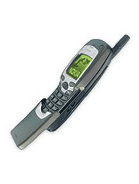
Which, I obviously had to get. It was a fat version of the 8110. This featured “WAP” or “CWAP” as most people called it back then, or “The baby Internet” as Steve Jobs called it in the iPhone launch some years later.
The scroll wheel was useful for spinning through lists of contacts, or scrolling web (sorry, WAP) pages. But other than the design, with the spring loaded cover, it wasn’t a memorable device.
App Era
From this point on all the devices I own had the capability to have additional apps installed. The way those apps were installed differs wildly, but it was a dramatic change from the ‘dumb’ phones of the previous century. From 2003 to 2008 was probably peak Nokia, before Stephen Elop came in and fucked it all up.
Nokia 6600 (2003)

This was quite a jump in design from the 7110 before it. The 6600 was pretty small and very comfortable in the hand. It felt like holding a smooth pebble all the time.
Nokia 6680 (2005)
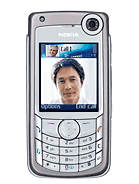
My first phone with a front-facing camera, and nobody to call with one! Like when Alexander Graham-Bell made the first phone!
Nokia N82 (2008)
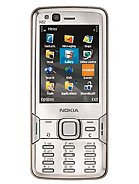
I had the black version of this, and absolutely loved it. I installed a few additional apps on this. One was a tethering application. I’d sit on the train with my Toshiba laptop tethered to the wireless connection on the N82, using the internet connection before WiFi on trains was ubiquitous.
I didn’t have a password configured on the wireless connection. One day a random person on the train started using it. I saw a woman nearby using her Apple laptop online, and figured she was using my phone. I opened whatever chat app I had, and enabled Avahi/Zeroconf/Bonjour and started chatting. Somehow, I found the log of that conversation:
Conversation with abby@Macintosh-6 at Tue 24 Feb 2009 18:32:03 GMT on
popey@mother (bonjour)
(18:32:05) popey@mother: hello!
(18:32:14) popey@mother: No, I don't mind you using my wifi
(18:32:19) popey@mother: It doesn't work in bridges though
(18:32:31) abigail: i thought it was the trains
(18:32:35) popey@mother: I wish
(18:32:36) abigail: sorry
(18:32:38) popey@mother: no probs
(18:32:40) abigail: ill go off
(18:32:44) popey@mother: its fine, honest
(18:32:57) abigail: sure cool
(18:33:01) abigail: thanks
(18:33:06) abigail: my battery is going to die
(18:33:15) popey@mother: can't help you there I'm afraid :)
(18:33:23) abigail: yeah know
(18:34:29) abigail: where are you on the train?
(18:34:33) popey@mother: behind you
(18:34:46) abigail: ah i saw you laughing at me
(18:34:52) abigail: thats why
(18:34:59) abigail: :-D
(18:35:07) abigail: wont be long promise
(18:35:12) popey@mother: yeah, sorry, I'm not some insane wierdo who
laughs at people on trains
(18:35:23) abigail: ah ha well you do get em
(18:35:28) popey@mother: I'm sure you do :)
I probably wouldn’t do that these days tbh.
“Smart”
HTC Hero (2009)
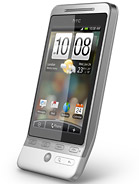
I think I first saw an HTC Hero in the hands of Stuart Langridge while walking to the pub after LUG Radio Live 2009.
It was a fun departure from all those years of using Nokia devices. But it wasn’t a great device. The Hero was severely underpowered. It could barely play audio without constantly skipping.
iPhone 4 (2010)
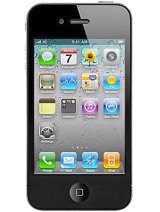
The iPhone 4 was a peak of mobile phone design when it came out, over a decade ago. I loved the feel of glass on the front and rear, and metal rail around the edge. The iPhone 4 was a massive step up from the HTC Hero.
iPhone 4s (2011)
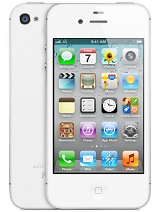
It wasn’t long after the iPhone 4 arrived in my hands that the 4s was announced. I ordered one, and got some money for the old 4 from Mazuma. The 4s was just as great as the 4.
The Ubuntu Phone years
While I worked at Canonical, internally we somewhat secretly worked on Ubuntu Touch - an OS for mobile phones and tablets. There were a bunch of devices floating around in the organisation running prototypes including the Nokia N9, Asus Transformer TF101, and LG Nexus 4.
The N9 was only in a few hands, and wasn’t really a main target. The Transformer tablet was handy because it had a built in keyboard, so was great for hacking. They were quite easy to brick though.
LG Nexus 4
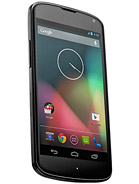
I picked up a Nexus 4 to do some hacking on Ubuntu Touch. They were cheap and easy to hack on. They would never have shipped with Ubuntu Touch, but they were great developer devices.
BQ Aquaris e4.5

This was the first officially supported Ubuntu Touch device. BQ had previously been shipping these with Android, but they made a few thousand with Ubuntu pre-installed. They also had the soft navigation buttons hidden on the Ubuntu version. We had a launch party in London where we invited a bunch of YouTubers and bloggers to get a device and unbox and review it on their channels. Fun times.
Meizu Pro 5
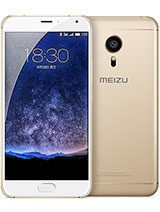
The Pro 5 was a decently specced device with better camera than any of the other Ubuntu devices. When the Ubuntu Phone project shutdown in 2017, I flashed Android on the Pro 5, and it was very capable and fast. Eventually the battery completely died, and I killed the device while replacing the battery with one I picked up on ebay. Sad times.
Back to Android
I often carried an Android phone and an Ubuntu phone around at the same time. Mainly because a bunch of features and apps were missing from Ubuntu. But also because it was super unreliable at times.
OnePlus X (2015)
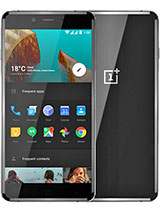
The X was easily my favourite OnePlus device.
OnePlus 3T (2017)
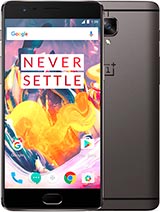
I managed to smash the display on this device, and then made a hash of repairing it. I clearly didn’t learn from my fun fixing the Meizu Pro 5 a few years earlier.
OnePlus 5 (2019)
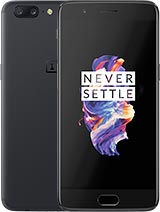
I still have this phone kicking around, running Lineage OS. There are a couple of applications I like using, for which there’s no iOS version available.
Back to Apple
iPhone 13 Mini (2022)

Back to Apple again. I couldn’t find an Android phone I liked. Now I have a MacBook Air, Apple Watch, Air Tags, iPads …
I do quite like the diminutive iPhone. But looking back, I’ve enjoyed most of the devices I’ve used.
Except that one phone I can’t remember the name of.. One day it’ll come to me…